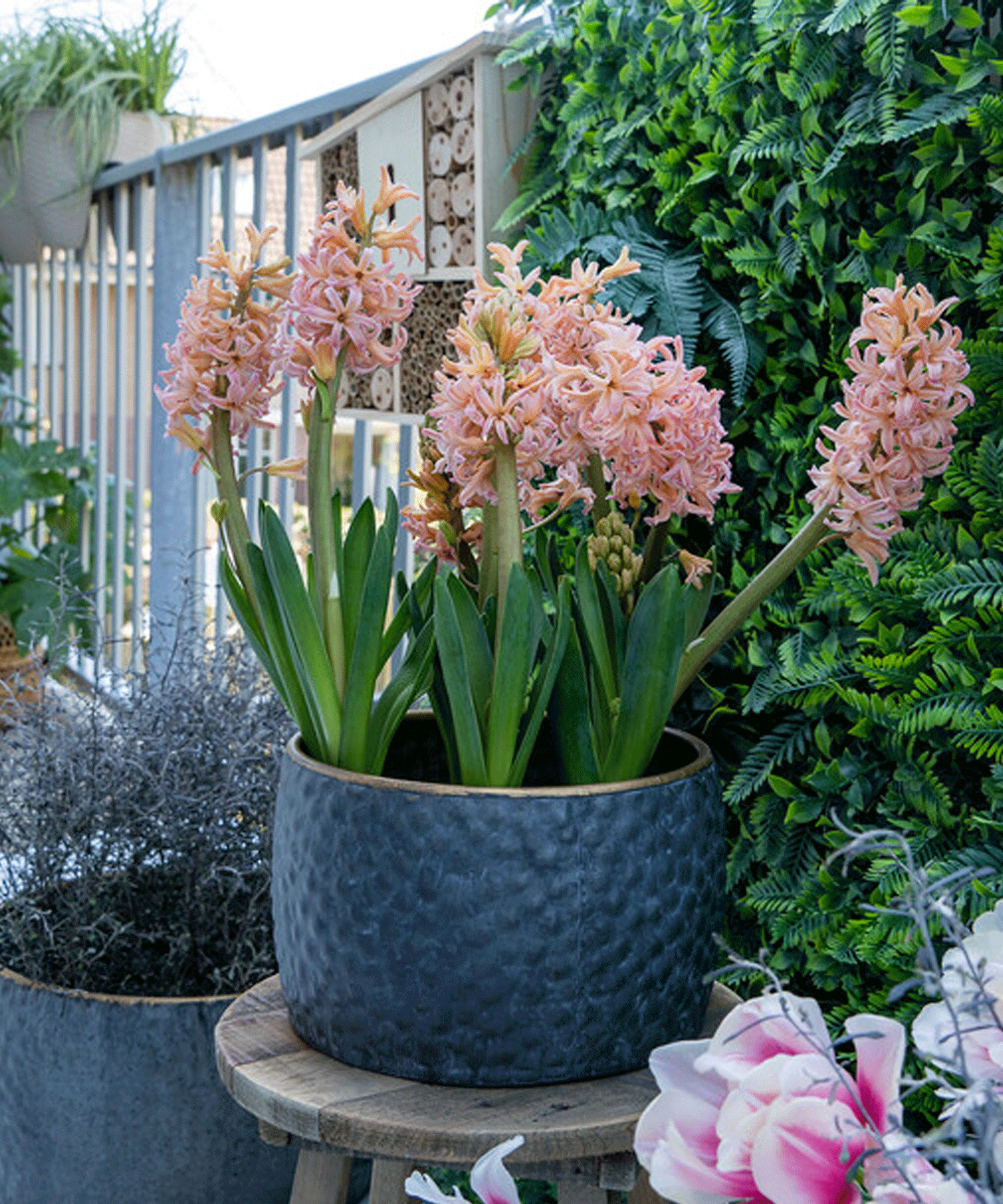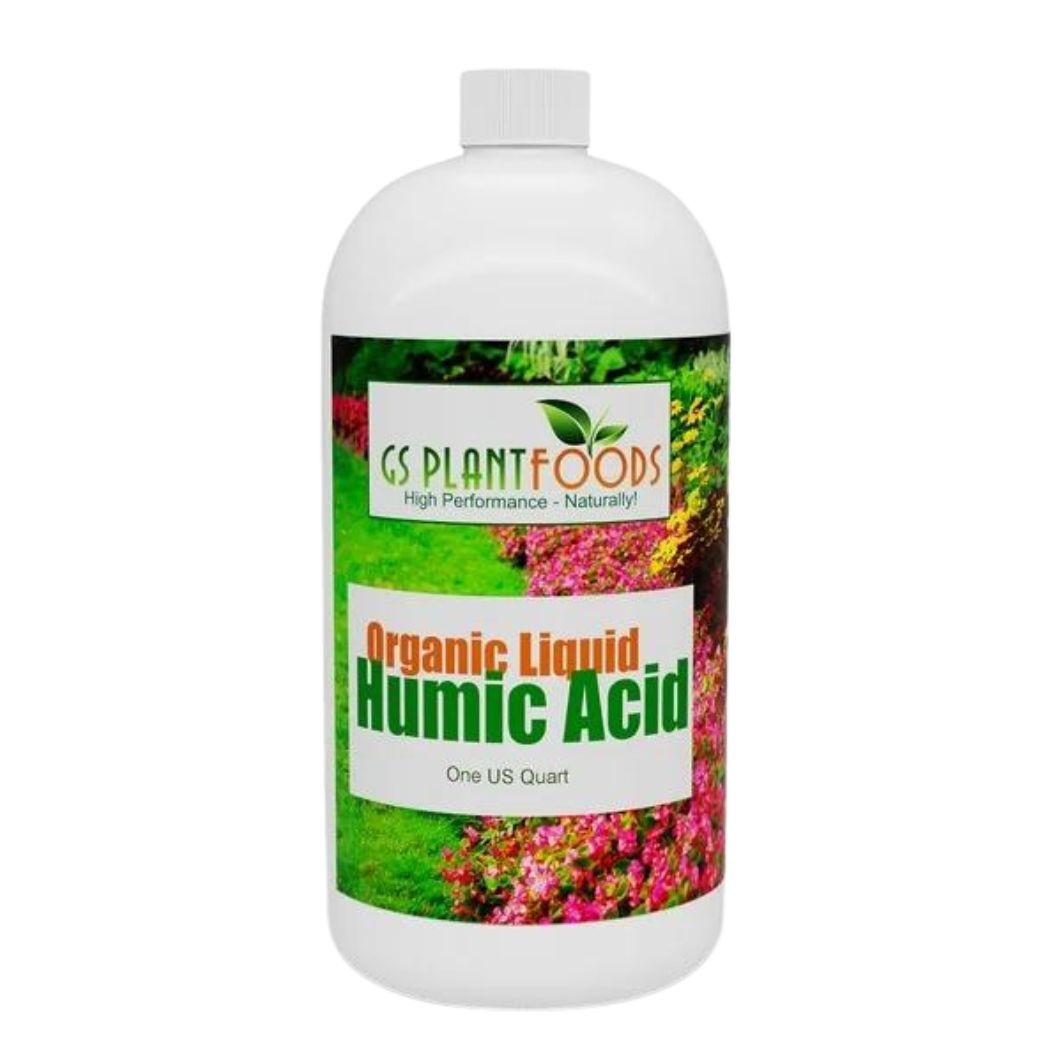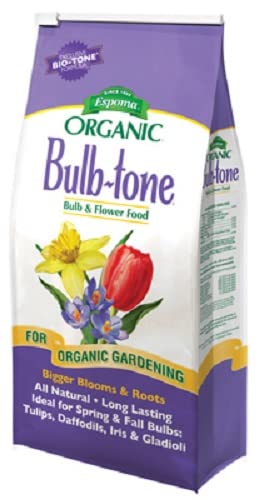When to Fertilize Bulbs — Gardening Tricks to Learn Now to Boost Flowers and Get More Blooms
Learn when to fertilize bulbs for the best possible start by boosting their nutrient intake and making sure they have a great growing environment

Although bulbs are essentially food stores themselves they still benefit from a little bit of extra nourishment at various stages of their growth and life cycle. Fertilizing bulbs definitely gives the roots a healthy boost, as well as encouraging them to produce the best show of flowers.
Choose either a water-soluble fertilizer, or a granular or slow-release one, which are both easy to apply at planting time. It's also important to prep the soil in your modern garden first to make sure it's in the best possible shape for bulb planting. This is easily done by adding plenty of organic matter to amend your soil before the bulbs go in.
It's also important to remember that fertilizer can only be utilized by the plant when there is water available to transport the nutrients from the soil into the roots. Be sure to water your newly planted bulbs regularly throughout the growing season if lack of rain is causing dry conditions that might impact on their nutrient uptake.
Now find out when to fertilize bulbs to get the best results and plenty of blooms both this year and going forward.
Fertilizing bulbs: is it always necessary?

In theory, a healthy new bulb that you've just bought at the garden center and are planting for the first time doesn't need any fertilizer to bloom in its first season because it has all the nutrients it needs naturally available within the bulb. But it's still a good idea to give new bulbs a boost by improving the soil they are growing in as that could be lacking in essential nutrients.
Meanwhile if your bulbs have been kept from previous years they will definitely benefit from being fertilized. 'Beyond making sure they had some good compost, I did not fertilize bulbs at all for years,' says Josh Steffen, horticulture manager at Wellfield Botanic Gardens. 'Then my bulb supplier recommended I think about fertilizing. It is suggested spring bulbs such as tulips and daffodils should be fertilized twice a year with a balanced fertilizer. I fertilize once or twice in the spring with an organic liquid feed fertilizer combined with humic acid, and I feed the bulbs just enough to give them a bit of a boost to flowering.' You can find humic acid at Walmart if you've not come across this fertilizer before.
If you're keeping bulbs for blooming in subsequent seasons that are either left to container gardening or in the ground to naturalize they will definitely benefit from fertilizer to encourage more prolific blooming the following year. So if you're wondering when to fertilize bulbs the time to do this is when shoots first appear in spring then again in fall.
Before you even think about fertilizing bulbs make sure your soil is rich in organic matter and has good drainage. If your soil lacks nutrients, you might want to add some organic material or compost to give your new bulbs the best possible start.
When to fertilize spring-flowering bulbs

Pink 'Gypsy Queen' hyacinths
Spring flowering bulbs such as daffodils, hyacinths and tulips are planted in the fall, from September to November depending on the type of bulb, and remain in the soil throughout winter.
To encourage their healthy root development it's a good idea to add a balanced fertilizer to the soil when you plant them. This means choosing a product that has equal proportions of the key nutrients nitrogen, phosphorus, and potassium (look for 'NPK' on packaging) for optimum growth. This one from
'Sprinkle a little slow-release organic bulb fertilizer or bone meal into the soil at planting time,' says plant expert Jenny Rose Carey. Bonemeal fertilizer (like this from Home Depot) is a feed high in phosphorus that gives newly planted bulbs a boost for the growing season, and helps them get established more quickly.
After planting spring bulbs, top-dress the soil with fertilizer. Lightly dig it in and water well. Always apply fertilizer to the top of the soil in this way and not in the planting hole, as this could 'burn' the bulbs.
It's also a good idea to feed the bulbs again in spring when they start to produce green shoots. Enrich the soil by sprinkling some of the same fertilizer and lightly digging it in, as before. Stop fertilizing the bulbs as soon as they start flowering. As bulbs fade remember to leave the foliage and stems until they go yellow and dry. This is because as long as they remain green, they are still feeding the bulbs to support next year’s growth.
When to fertilize summer-flowering bulbs

Purple alliums
Summer flowering bulbs, tubers and rhizomes such as alliums, cannas, dahlias and begonias like to be fed regularly throughout the growing season. Although they might have different names their needs are essentially the same.
'In gardening, the word 'bulb' is a shorthand way to describe a range of underground storage structures that we plant to produce flowers,' says Jenny Rose Carey. 'These may include corms, rhizomes and tubers, as well as true bulbs. They all serve the same function of storing energy below the ground.'
If your soil is poor it's worth incorporating plenty of organic matter before you plant the bulbs. Learning how to amend garden soil like this you give the bulbs optimum conditions for healthy growth.
When planting summer-flowering bulbs, fertilizers can be incorporated into the soil too, then repeated as the bulbs grow. Treat them to a high-potash liquid feed every couple of weeks as soon as the new shoots appear, and continue feeding throughout their flowering period.
Dahlias in particular will thrive with this combination of liquid feed and enriched soil. 'Make sure you plant dahlias in good potting compost with added nutrients because they are gluttons,' says bulb expert Jacqueline van der Kloet. Add a good supply of well-rotted manure around the base soon after planting dahlias. The plants should also be fed every few weeks throughout the growing season. Alternate between a seaweed tonic and a potash-rich tomato feed.
Stop feeding summer bulbs once the foliage starts to fade and dies back at the end of the growing season. When leaves are no longer green they are unable to benefit from added nutrients, so it's a waste of time fertilizing them.
Should bulbs be mulched too?

It's always a good idea to mulch around newly planted bulbs. Use a couple of inches of compost or shredded leaves. This will lock in moisture just when your bulbs need it, which helps facilitate nutrient uptake.
Mulching reduces the need for digging, which can easily lead to bulbs being dislodged or damaged. It can help regulate soil temperature, and prevent weeds germinating. In fact, mulching creates the ideal growing environment for your bulbs to thrive.
Be The First To Know
The Livingetc newsletters are your inside source for what’s shaping interiors now - and what’s next. Discover trend forecasts, smart style ideas, and curated shopping inspiration that brings design to life. Subscribe today and stay ahead of the curve.
Lifestyle journalist Sarah Wilson writes about flowers, plants, garden design and trends. She has studied introductory garden and landscape design and floristry, and also has an RHS Level 2 qualification in the Principles of Plant Growth and Development. In addition to homesandgardens.com and livingetc.com she's written for gardeningetc.com, Real Homes, Modern Gardens and Country Homes & Interiors magazines. Her first job was at Elle magazine, during which time a trip to the beautiful La Colombe d'Or in St-Paul-de-Vence led to an interest in writing about all things botanical. Later as lifestyle editor at Country Homes & Interiors magazine the real pull was the run of captivating country gardens that were featured.
-
 5 Bathroom Layouts That Look Dated in 2025 — Plus the Alternatives Designers Use Instead for a More Contemporary Space
5 Bathroom Layouts That Look Dated in 2025 — Plus the Alternatives Designers Use Instead for a More Contemporary SpaceFor a bathroom that feels in line with the times, avoid these layouts and be more intentional with the placement and positioning of your features and fixtures
By Lilith Hudson Published
-
 Why Decorating With Mustard Yellow Helps Fill Your Interiors With a Sense of "Confident Calm"
Why Decorating With Mustard Yellow Helps Fill Your Interiors With a Sense of "Confident Calm"There is so much more to decorating with this turmeric-tinted sauce-wiggled-on-a-hotdog not-quite-yellow shade than meets the eye
By Amy Moorea Wong Published

